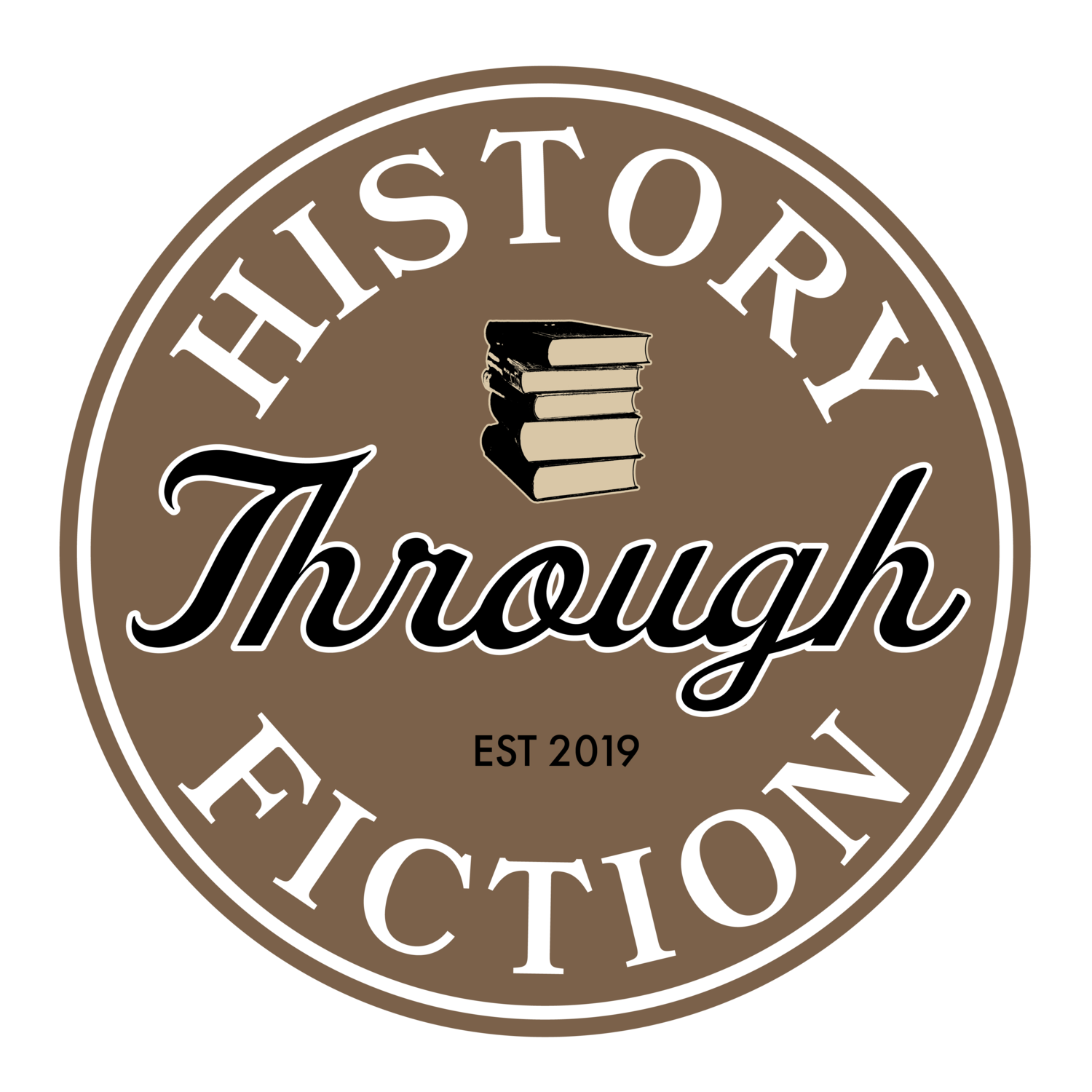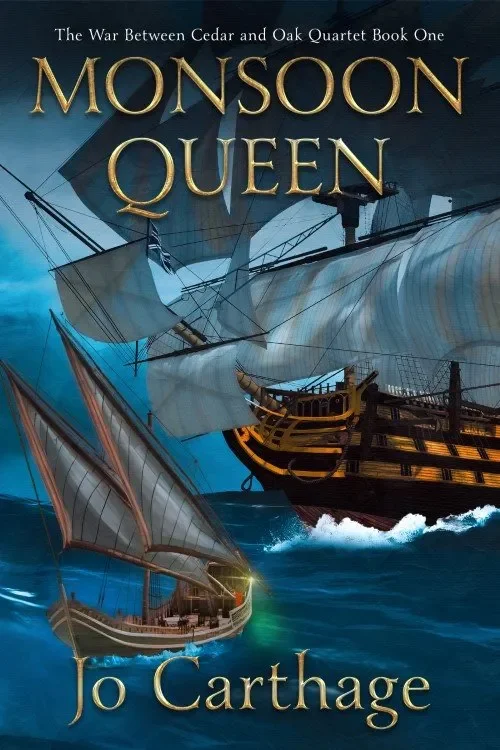An Interview with Jo Carthage, Author of “Dream Swimmers”
“Dream Swimmers”, set in 19th century Middle East and Africa, includes several characters with magic powers. What do you think it is about this time and location that lends itself well to fantasy?
With the exception of the magical purple lizards and intertwined dreaming, I like to think everything that happens in Dream Swimmers could have happened. V-shaped poly triads, fighting for freedom against encroaching empire, love in unexpected places, those are all story elements that could fit anywhere. To me, the biggest fantasy in this story is that Noor could save Rami. Too often, it’s impossible to save others from what is happening to them. The best we can do is sit beside them as they endure, as Noor does with Rami in the first book. But in this story, Noor can save someone she cares for, bring him out of prison and into freedom. That’s a real wish-fulfillment fantasy for me. And the setting allows me to heighten the intensity, to draw on the historical record to figure out how someone truly could address the terrifying situation Noor is faced with as the story opens.
I also like to think any time or place is a good time to ask “what could someone do to combat injustice if they had no limits?” And then, what limits could they experience through the internal metaphysics of this particular story, and how would they think them through?
Dream Swimmers expands the magical world of Monsoon Queen, bringing in shared dreaming and all the ambiguities and consequences of connecting former enemies and almost-friends through the intimate medium of dreams. Each of the dreams takes place in and around a lagoon in Gaza.
When I was first editing this quartet in 2019, it was 3 years after I’d spent a few days in Gaza teaching for a Google-funded start-up incubator. In 2016, I walked through the Eretz crossing to teach adult coders and designers and elementary school girls. Then I left, knowing very few of my students were allowed to follow. This left a mark at the time. So did the Israelis bombing a few blocks from our hotel, but that is a different story.
When I came to write this story, the first place I could think of for a dream was Gaza. I wanted to share a tiny sliver of the beauty and history I had seen. I wanted to write down my memories. I have many friends there now, in desperate situations, and every place I went only exists in our memories now. If I could visit the Gaza of 2016 in a dream, see it as Noor and Rami do, I would in a second.
As a historical fiction author, your characters have to balance between our time and theirs. How do your characters, Noor in particular, bridge this gap, and what do you think they say about our place and time?
I wrote the drafts of this quartet before joining a graduate history program, so I feel a bit complex about not having gone into archives to confirm evidence for this story. But since 2011, there hasn’t been a year when my Yemeni friends have said it was safe for me to visit them — and I’ve asked.
So when we face what academic historians would call a lacuna, or a gap in the archive or archival access, what do we do? I’ve chosen to try to anchor myself in well-researched details but also take an inspiration from Tolkien and treat the whole book as a translation. When Noor or Rami use phrases that I cannot prove were used in period, but work for the story, I just think of it like the amazing Lombardo translation of the Iliad, where Achilles and his men swear like marines — because that form of translation preserves something of the feeling of the original Greek that more formal translations would not.
You mention in your acknowledgements that your elementary school librarian instigated your interest in Yemen. Can you tell us more about that moment and how your interest grew into this novel?
I went to a progressive pre-K-8 school: no grades, no tests, we called our teachers by their first names. For an hour a day, after 5th grade, we had Choice, which was an elective period. We could go to the clay studio or the weaving studio or the woodshop, or the library. In the library, the librarian would pile Scrabble tiles on the big, heavy wooden table and we would painstakingly turn them all face down. Then we would go around a circle, turning over one tile at a time, and calling out a word from the letters we saw. We called it Anagrams.
Qs without Us are always a bit of a mess, whether your playing Anagrams or Scrabble, so we all collected words that use Q without a U. Qat was a key one. But you couldn’t use it without knowing the definition, so I learned that qat is a semi-hallucinogenic drug commonly used in Yemen.
That was the first thing I’d ever learned about Yemen. Not the usual introduction an American kid in the 1990s had, but week after week or years, “qat” won me rounds when nothing else would, so I developed a strong affection for the word and the country and language that birthed it.
I often write about places I haven’t been able to go yet (Yemen, Djibouti, space, 1812 or 1951) and use writing as a way to visit, in my imagination at least. Reading has always been that chance for me, to go to places and times I can’t yet access, or may never been able to visit or return to. I also write about places I’m fascinated by, and I think that fascination started around my elementary school library table, with Q and A and T tiles, and a knowing grin from my librarian.
Your story focuses heavily on dreams. How do you feel about your own dreams in real life? Are they just fun stories I for when you wake up, or do you look for meaning in them?
I tend to think of my dreams as a barometer of my mental health. I don’t focus much on the specifics, rather after waking I try to discern the vibe. If I start to have anxiety dreams, I tend to look for a reason why I might be feeling anxious. When I’m working on issues in my day job that involve human rights abuses and visuals from my work begin to appear in my dreams, that’s a clear sign that I need to do other kinds of work for a few days until my subconscious has scabbed over a little more. I’ve spent enough of my career working on those issues that a “good dream” for me is one without fear or horror elements. Luckily, when I was small, I taught myself lucid dreaming, so when my work or memories appear in disturbing forms, I can wake myself up within seconds and reset.
Because my own form of dreaming isn’t particularly conducive to serving the role of a book plot, I’ve borrowed other people’s experiences of dreaming, with distinct narratives but perhaps obscure motivations and motives. Noor and Rami’s relationship develops through dreams where they are never fully in control, nor fully part of an external narrative, but at a complicated, in-between form of agency.
Could you tell us a bit about your journey to NineStar Press and why “Dream Swimmers” feels at home there?
For a few years during the height of the pandemic, I had the privilege of doing volunteer tech support for a slash con called Escapade that happens every spring in the Los Angeles area. Slash is a term for fanfiction that posits queer readings of often non-canonically queer media. One of the regular attendees maintained a spreadsheet of queer-friendly publishers, and when I was ready to submit Nuclear Sunrise, NineStar Press stood out because they are based in Albuquerque. New Mexican people and places play a key role in that novel, so I thought a publisher who loved the Southwest enough to live there might be willing to take a chance on me.
It took me more than a year to send the pitch to them, because I wanted to get a full review of the book from an expert and member of the Mescalero Apache Reservation. There are key characters and scenes on that reservation and I wanted to ensure my portrayal was appropriate (I did the same process with Yemeni and Somali-American friends for Monsoon Queen and Dream Swimmers) had connected with the Director of the Cultural Center. He asked that I come by his office on the reservation to get his feedback, so I drove the extra 10 hours out of my way on a roadtrip there in August/September 2022. He said it was fine and I had an educational experience going through their beautiful museum.
After speaking with him, I felt alright submitting it to a publisher, and emailed my pitch to NineStar Press from the out of season ski chalet I was staying in for the night. And they picked it up!
It was such a growth experience working with my editor, when the time came to pitch my quartet, I emailed her a pitch and she said yes.
“Dream Swimmers” is a sequel to “Monsoon Queen”. Are there any unique challenges that came with writing a sequel that you didn’t experience when writing your first book?
This is a bit inside baseball, but when I first wrote this story, it had a different setting and the whole quartet was one 160k book. Those of you in publishing know publishers are looking for specific word count ranges for specific genres and generally a debut fantasy novel should be under 120k or more likely, under 100k. So when I shifted the setting in 2019, I took a long, hard look at the plot and found it fit a quartet structure well. Even though I wrote it all at once, I found each book was a different subgenre. Book 1 is a fantasy adventure; Book 2 is a heistory (a heist history, I learned the word from my local romance bookstore) with a ticking clock and a “maiden” in distress; Book 3 is a Anime Beach Episode, just a soft chance to heal and get ready the final push, and Book 4 is a courtroom drama.
The biggest challenge is bringing the writing up to my current skill level. I’ve learned a lot about dialogue and description and flow from publishing my first two books, and I want to make sure those lessons shine through.
At the end of the day, I want to tell good stories that connect people to their worlds, interior and external, and that give characters room to grow and change and fail and fly. I’m hoping Dream Swimmers will be that kind of book.
About the Author
Jo Carthage (she/her) writes historical romance, SF, and fantasy. Queer folks have always been here and we deserve to be in stories. Read for slow burn, enemies-to-lovers, hurt/comfort, and intense world-building geekery. Check out more about Jo on on X, Instagram, or tumblr.


